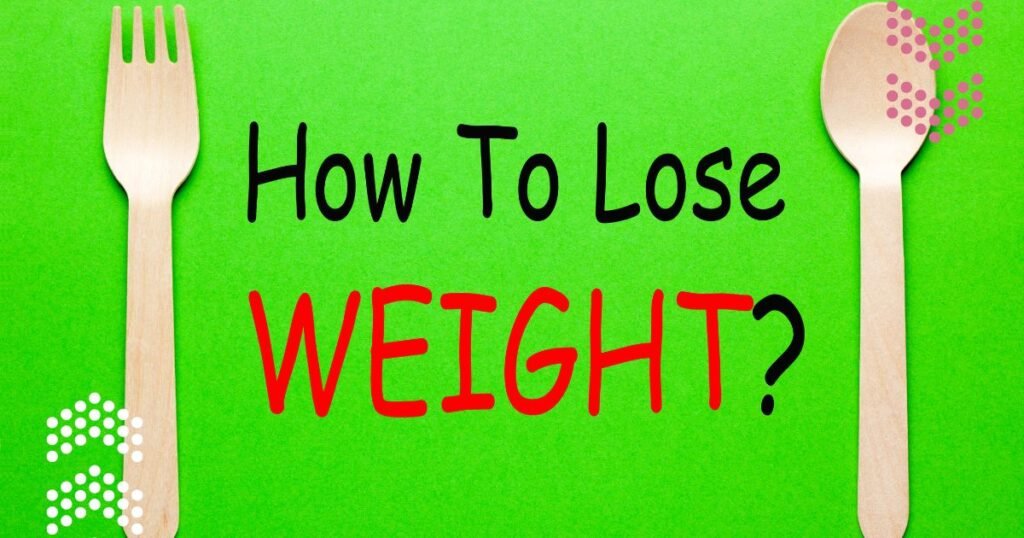Weight Loss vs. Fat Loss: What Women Need to Know
The Differences and Importance of Focusing on Fat Loss for Women
Many women confuse weight loss with fat loss, but they are not the same. Weight loss is simply reducing the number you see on the scale, but it can involve losing water, muscle, and fat. Fat loss, on the other hand, is a more targeted approach, aiming to reduce body fat while preserving muscle mass. Focusing on fat loss is more beneficial for women in the long term because it improves overall health and body composition without sacrificing muscle mass, which plays a vital role in metabolism.
One key reason women should focus on fat loss is the difference in how their bodies store fat compared to men. Women naturally have higher body fat percentages due to hormonal factors and the needs of childbearing. Reducing fat while maintaining muscle can enhance physical appearance and contribute to better metabolic health. In contrast, losing muscle along with fat can lead to a less toned body and a slower metabolism.
Why Weight Loss Isn’t Always Fat Loss for Women: Understanding Water Weight, Muscle Loss, and Fat
Weight fluctuations are normal, but they don’t always reflect changes in body fat. Understanding the roles of water weight, muscle loss, and fat is essential to properly assess your progress. Learn more about why weight loss isn’t always fat loss to make more informed decisions about your fitness and nutrition plan.
Water Weight
Water weight can cause significant fluctuations in your weight from day to day. Women, in particular, experience water retention due to hormonal changes related to their menstrual cycles. These fluctuations are temporary and don’t represent actual fat gain or loss. Additionally, dietary factors such as high salt intake can cause increased water retention.
Muscle Loss
In some cases, weight loss can come from losing muscle mass instead of fat. This is especially common when women follow extreme diets or do excessive cardio without proper resistance training. Muscle loss is undesirable because it lowers your metabolism, making it more difficult to maintain long-term weight loss. Preserving muscle is critical for overall health, strength, and metabolic function.
Fat Loss
Fat loss is the reduction of stored fat in the body while maintaining muscle mass. This leads to a leaner, more defined physique and improved health. Fat loss should always be the focus of any weight management program. It is a slower process than simply losing weight but is far more sustainable and beneficial.
The Dangers of Rapid Weight Loss for Women: Muscle Wasting and Metabolic Adaptation
Crash diets and extreme calorie restrictions often promise quick results, but they can have severe consequences for your health. Rapid weight loss is not the same as effective fat loss, and it can result in muscle wasting and metabolic adaptation. Learn more about the dangers of rapid weight loss for women and why a gradual approach is healthier.
Muscle Wasting
When you drastically reduce your calorie intake, your body starts breaking down muscle for energy. This is a major problem because muscle tissue is metabolically active and helps your body burn calories even at rest. Losing muscle slows down your metabolism, making it harder to lose fat in the future.
Metabolic Adaptation
Metabolic adaptation occurs when your body adjusts to a low-calorie diet by slowing down its metabolic processes. This makes it more difficult to lose weight and easier to regain it once you return to a regular eating pattern. Women are particularly susceptible to metabolic adaptation due to their hormonal makeup and lower overall muscle mass.
To avoid these pitfalls, it’s essential to focus on sustainable fat loss approaches. This involves eating a balanced diet, incorporating resistance training, and allowing your body enough time to adjust to the changes.
How Women Can Measure Fat Loss Progress
Relying solely on the scale to measure fat loss is misleading. There are better ways to assess progress, such as body fat testing, progress photos, and tape measurements. Explore these methods for measuring fat loss progress and get a clearer picture of your body composition changes.
Body Fat Testing
Several methods can accurately measure your body fat percentage, including skinfold calipers, DEXA scans, and bioelectrical impedance scales. These tools provide a more accurate measurement of fat loss than simply tracking your weight on a scale.
Progress Photos
Taking progress photos over time is an excellent way to visually track your fat loss journey. You may not notice daily changes, but comparing photos taken weeks or months apart can reveal significant progress that the scale may not reflect.
Tape Measurements
Another effective way to measure fat loss is by using a tape measure to track changes in key areas like your waist, hips, and thighs. This method can highlight fat loss in specific areas and is often more reliable than weight alone.
The Importance of Resistance Training for Women to Preserve Muscle During Fat Loss
Preserving muscle mass while losing fat is essential for long-term health and fitness. Resistance training helps you maintain muscle mass and keeps your metabolism high. Learn more about the importance of resistance training in fat loss for women.
Women who incorporate resistance training into their fitness routines tend to have better results in fat loss and muscle preservation compared to those who rely solely on cardio exercises. Lifting weights or using resistance bands not only helps you burn calories during the workout but also increases your resting metabolic rate, allowing you to burn more calories throughout the day.
Recomposition for Women: Losing Fat and Gaining Muscle Simultaneously
Body recomposition is a process where you simultaneously lose fat and gain muscle. This approach results in a leaner, more toned appearance, even if your weight stays the same. Discover how women can achieve recomposition with the right combination of diet and exercise.
To achieve body recomposition, women should focus on eating enough protein to support muscle growth, strength training regularly, and maintaining a slight caloric deficit. This approach may take longer to see results, but it creates a lasting impact on your body composition.
Visual Differences Between Losing Fat vs. Losing Muscle for Women
Losing fat and losing muscle produce very different effects on your body. While losing fat leads to a leaner and more toned physique, losing muscle can result in a “skinny fat” appearance where you have a low body weight but a high body fat percentage. Learn about the visual differences between fat loss and muscle loss, and why it’s important to preserve muscle.
Fat Loss
When you lose fat while maintaining muscle, your body becomes more defined and toned. You’ll notice improved muscle definition, firmer skin, and a reduction in overall body fat percentage. This creates a healthier and more athletic look.
Muscle Loss
In contrast, losing muscle makes the body appear softer and less toned. Even though the scale may show weight loss, the visual results are not desirable. Muscle loss can lead to a saggy appearance, especially in areas like the arms and abdomen.
Why the Scale May Not Reflect Your True Progress as a Woman
The scale is not always an accurate measure of progress, especially for women undergoing fat loss and muscle gain simultaneously. It’s important to remember that muscle weighs more than fat, so you may not see a change in your weight even as your body composition improves. Find out why the scale isn’t always the best measure of progress.
Understanding the “Skinny Fat” Phenomenon in Women
The “skinny fat” phenomenon refers to individuals who appear slim but have a high body fat percentage relative to their muscle mass. This is common among women who focus solely on weight loss without preserving muscle. Learn more about the skinny fat phenomenon and how to combat it with strength training and a balanced diet.
Women who are “skinny fat” may be at a higher risk for health issues such as metabolic syndrome, which includes conditions like high blood pressure, insulin resistance, and abnormal cholesterol levels. Maintaining muscle mass while losing fat is crucial to avoid these risks and achieve better health outcomes.
The Importance of Sustainable Fat Loss Approaches for Women
Sustainable fat loss is key to long-term success. Crash diets may offer quick results, but they are rarely sustainable and often result in weight regain. Instead, focus on gradual fat loss that allows your body to adapt without sacrificing muscle mass. Explore sustainable fat loss strategies for women and avoid the pitfalls of rapid weight loss.
Monitoring Non-Scale Victories for Women: How Clothes Fit, Strength Gains, and Energy Levels
Non-scale victories are critical indicators of progress during your fat loss journey. These victories include changes in how your clothes fit, increased strength, and better energy levels. Learn how to track these non-scale victories to stay motivated and focused on your goals.
Clothes Fit
If your clothes fit better but the scale hasn’t moved, that’s a sign that you’re losing fat and possibly gaining muscle. How your clothes feel is often a more reliable measure of progress than your weight.
Strength Gains
Strength gains are a clear indicator of improved fitness and muscle preservation. If you’re able to lift heavier weights or perform more reps, it’s a sign that your body is building muscle even if the scale isn’t showing a difference.
Energy Levels
Improved energy levels are another non-scale victory that indicates progress. When you fuel your body correctly and engage in regular exercise, you’ll experience better energy throughout the day, which is a strong indicator of overall health.
Conclusion
Focusing on fat loss instead of just weight loss is crucial for women looking to improve their health and physique. With the right combination of nutrition, exercise, and patience, you can achieve sustainable results that benefit your overall well-being. For more information on how to balance calories for fat loss, check out our article on Calories In vs. Calories Out for women.
If you’re ready to start your fat loss journey, browse our website for all the resources, recipes, and tools we offer to support you. From in-depth articles to calculators designed for women, we have everything you need to reach your goals and maintain a healthy, fit lifestyle.
Learn more about healthy weight loss for women and visit Harvard’s expert advice on diet and weight loss to support your fitness journey.


